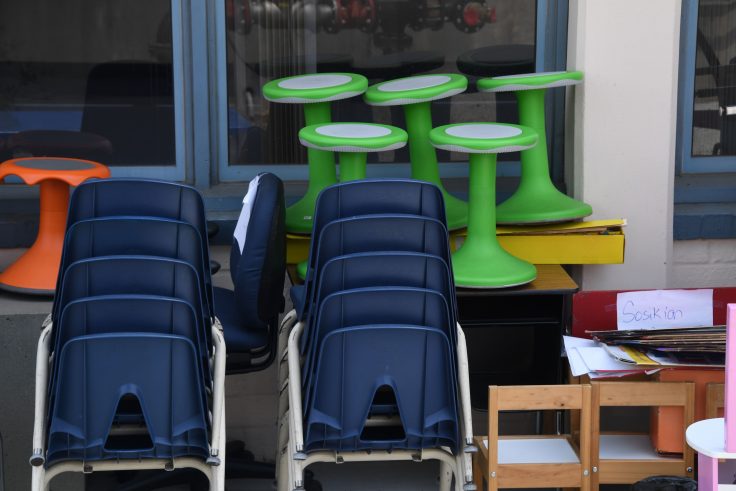A new study finds that school districts with strong teachers' unions are more likely to recommend district-wide shutdowns and exclusively online learning.
The study from the Annenberg Institute, an education research institute within Brown University, analyzed which factors best predict a school district's decision to return students to the classroom or educate them remotely. It concluded that "mass partisanship and teacher union strength best explain how school boards approached reopening." The conventional understanding of school districts as "localized and non-partisan actors," the study said, has been challenged by their political approach to the coronavirus.
Some school districts—most notably in Los Angeles, Sacramento, and Chicago—have remained entirely virtual as powerful teachers' unions refuse to negotiate reopening plans. According to the Sacramento City Unified School District, the board is at an "impasse" with the Sacramento City Teachers Association union over a reopening plan, despite constant complaints from parents regarding the inadequacy of online learning.
The Sacramento City Teachers Association—one of the district's three teachers' unions—said it will not negotiate a reopening plan until COVID-19 has receded "equitably" across all zip codes in the area. "Even if Sacramento county overall can maintain [low numbers of COVID], our collective position is it is unsafe and inequitable to resume instruction via a hybrid or fully-in-person instructional model until these standards can be achieved in every zip code," the union said. In a letter signed by all three of the Sacramento-area teachers' union presidents, the group reiterated its position that "California cannot physically open schools for in-person instruction unless it is safe."
By and large, the data show reopening is safe. A new study in the Atlantic found that infection rates among students and staff are incredibly low, and that schools have seen almost no "superspreader" events. In the last two weeks of September, just 0.13 percent of students and 0.24 percent of staff contracted coronavirus nationwide, according to the authors.
Nonetheless, teachers' unions have stonewalled school districts and refused to meet to discuss hybrid learning. According to the Sacramento City Unified School District, unions have turned down 23 dates to meet about a possible return plan.
Max Eden, an education policy expert at the Manhattan Institute, said the study's findings aren't surprising. "Teachers' unions service teachers, not students, and union leaders can be rationally proud of keeping schools shut down," Eden told the Washington Free Beacon. "Their members get paid and bear less risk of illness."
The Annenberg Institute study also found that districts are sensitive to the threat of students exiting public schools for private ones. "Districts located in counties with a large number of Catholic schools were less likely to shut down and more likely to return to in-person learning," the study reads.
For Eden, this discovery shows that teachers' unions aren't serving students' interests. "If kids have the chance, their families want them in schools," Eden said. "Unions don't want kids to have other options, they want to keep them in a system that fundamentally serves the interests of adults, not kids."
